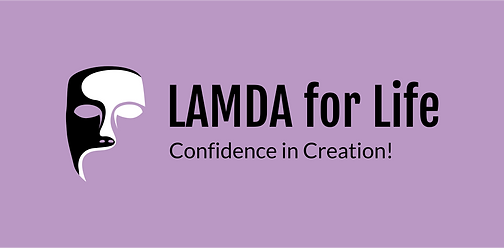How LAMDA Lessons Foster Creativity in the Arts
- Hannah Blount

- Jun 8
- 4 min read
The London Academy of Music & Dramatic Art (LAMDA) is renowned for its diverse range of performing arts courses. Many students aspire to enroll in LAMDA lessons, drawn by the promise of enhanced creative expression. But how exactly do these lessons foster creativity in the arts? Let's explore the various aspects of LAMDA lessons that encourage imaginative thinking, confidence, and artistry.
What are LAMDA Lessons?
LAMDA lessons encompass a variety of subjects, including acting, speech, and drama. They focus on nurturing both performance abilities and personal growth. These lessons are designed not just to teach students how to perform but also to develop critical skills such as communication, teamwork, and emotional intelligence.
Through a structured curriculum, students engage in voice training, movement, and character analysis. They learn how to bring texts to life while exploring their unique interpretations. This journey begins with understanding the fundamentals, but it goes beyond that to include creative storytelling and self-expression.

The Role of Imagination in Performance
One of the most important aspects of LAMDA lessons is the emphasis on imagination. Students are encouraged to envision different characters, settings, and scenarios. This imaginative process is crucial, as it allows them to step outside their comfort zones and explore various perspectives.
For example, a student might be tasked with interpreting a classic Shakespearean role, tapping into the historical context while also infusing the character with modern relevance. This not only fosters creativity but also helps students develop a deeper appreciation for literature and the emotional resonance behind each role.
An interesting statistic to consider is that creative activities stimulate the brain's reward systems, promoting heightened engagement. This means that as students unleash their imaginations in LAMDA lessons, they are also enhancing cognitive function.

Collaboration and Teamwork in the Arts
In the world of the arts, collaboration plays a vital role. LAMDA lessons provide students with opportunities to work together, whether in group scenes or ensemble pieces. Learning to collaborate helps students understand the importance of listening to others and valuing their input.
Working in a group setting challenges students to compromise and adapt their ideas. This mutual exchange encourages them to blend individual creativity with collective vision. For instance, creating a short play requires each student's unique talents—writing scripts, composing music, or developing choreography.
Statistics indicate that around 75% of creative projects in the arts thrive on collaboration. As LAMDA students learn to work effectively as a team, they cultivate talents that are crucial for successful careers in the arts.
Confidence Building Through Performance
One of the most remarkable benefits of LAMDA lessons is the confidence students gain from performing. The act of presenting in front of peers can be daunting, yet through regular practice, students learn to embrace the spotlight.
As they prepare for exams or showcases, they work on cultivating stage presence, vocal projection, and emotional delivery. Over time, this practice fosters a sense of accomplishment and poise. This newfound confidence not only helps them on stage but also permeates other aspects of their lives—improving public speaking skills, self-esteem, and even social interactions.
One impactful way to build confidence is through positive feedback and constructive criticism. LAMDA instructors provide valuable insights that help students refine their craft, making the learning process enriching and supportive.

Exploring Diverse Genres and Techniques
LAMDA lessons expose students to a wide range of creative forms—be it classic drama, contemporary pieces, or even musical theatre. This diversity enables students to discover their personal preferences and talents across various genres.
Exploring different styles and techniques broadens their artistic horizons. For example, a student might be drawn to physical theatre, which relies heavily on movement and minimal dialogue. This encourages imaginative interpretations and fosters creativity in expressing emotions without words.
By learning various techniques, students begin to appreciate the richness of the artistic landscape. This exposure not only enhances their versatility as performers but also empowers them to create original works that reflect their unique styles.
LAMDA’s Contribution to Creative Arts Education
LAMDA's commitment to providing a robust educational foundation contributes significantly to the broader concept of creative arts education. The lessons help students not only as performers but also as well-rounded individuals.
Education in the arts promotes critical thinking, empathy, and adaptability—all essential skills for the future workforce. In a rapidly changing world, the ability to adapt creatively is invaluable. LAMDA cultivates these abilities, thus preparing students not just for the arts, but for various careers.
As students graduate from LAMDA, they carry the skills and confidence they have acquired into their future endeavors. Whether they pursue acting or another career path, the lessons learned during their time at LAMDA pave the way for success in any field.
Embracing Creativity Beyond the Classroom
The impact of LAMDA lessons extends far beyond the classroom. Students often take the skills they acquire to engage in local theatre groups, community projects, or even create their own performances. This active involvement in the arts fosters a sense of belonging and purpose.
Moreover, the skills learned in LAMDA can be applied to various life situations, including job interviews, presentations, and networking events. As students learn to articulate their thoughts and express their creativity, they develop a unique voice that empowers them in both personal and professional interactions.
Encouraging students to continue their creative journey outside of classes further reinforces the value of artistic education. They can participate in workshops, attend performances, or collaborate with fellow artists, enriching their experiences and expanding their networks.
The joy of creation is contagious, and by sharing their passion, students inspire others to explore their creativity as well.
Final Thoughts
LAMDA lessons play a transformative role in fostering creativity in the arts. By encouraging imagination, collaboration, and confidence, these lessons equip students with skills that transcend performance. As they embrace the diverse techniques and genres of the arts, students develop a deep appreciation for creativity as a whole. With its commitment to the arts, LAMDA stands as a beacon for aspiring artists, nurturing talents that will illuminate the stage for generations to come.





Comments